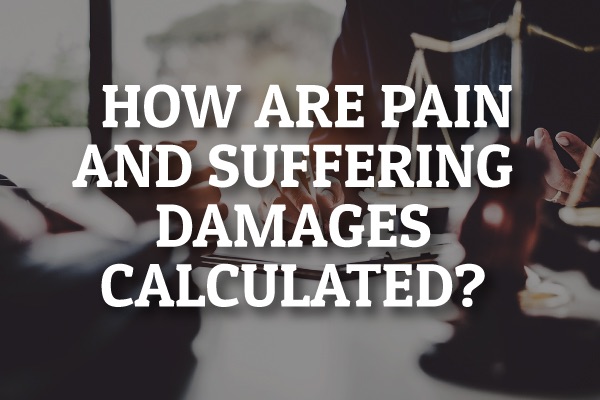
In personal injury law, a plaintiff can seek compensation for economic and non-economic damages after their accident.
Economic damages refer to easily calculable losses stemming from the accident or injury. This includes trackable areas such as medical bills from the injury caused by the accident, loss of income from missed time at work, property damage, and any out-of-cost expenses directly related to the accident.
Non-economic damages refer to pain and suffering. Pain can be physical sensations, emotional distress, or a combination of the two, as long as it is directly related to the accident or injuries sustained from the accident. These are harder to calculate as they do not typically have set numbers on which to base the dollar value.
It can be stressful to figure out exactly how much your pain and suffering is worth in a court of law. However, the dedicated team at Branch & Dhillon has broken down how courts calculate how much your pain and suffering is worth.
Putting a Dollar Amount on Pain and Suffering
It is not an easy task to put a dollar amount on a non-quantifiable idea or feeling such as pain and suffering. Unlike medical expenses or property damages, there is no set defining factor as to how much these damages are worth. Because of this, court systems and insurance companies have created a calculator to help determine how much pain and suffering are worth in an injury settlement. While each insurance company and court case is different, these two general calculation methods are generally applied:
The Multiplier Method
The most commonly used calculation method for pain and suffering is the multiplier method. It is pretty straightforward. When this approach is used, the courts will add up the economic damages from the case, such as medical expenses and property damages, and then multiply that number by 1.5 to 5 (this second number is known as the multiplier). The multiplier is based on how severe the factors are in your case. Factors may include the seriousness of your injuries, the projection of your recovery time, how your injuries impact your daily life, and whether or not the defendant was entirely at fault for the accident.
The Daily Rate Method
The daily rate method was created to try and place a dollar amount on each day that the plaintiff has had to live with the pain, or will have to live with the pain, caused by the accident. However, this approach is not commonly used because it forces the plaintiff to try and prove/justify that their pain and suffering is worth the amount they are arguing for. When using this method, the experts at Branch & Dhillon will often base the daily rate off of your daily earnings. This helps create a solid number that is hard to argue, as missing days or work due to emotional or physical distress can be more easily calculated. Here is a scenario to further explain how this method works:
Person A slips and falls at a restaurant due to an unmarked wet floor, resulting in a broken leg. The broken leg takes three months to heal properly, forcing the individual who fell to take pain medication, miss three months of work, and wear a cast for that time. However, due to complications with healing, they are given a boot and more pain medication for another month.
This is four months total of pain and suffering that person A had to endure. This is roughly 120 days of pain and suffering. The individual who fell makes about $150 a day at their job. To find out how much their pain and suffering is worth in this case, the insurance company and the courts take the $150 and multiply that by the number of days that person A was suffering. This brings the total amount for pain and suffering to $18,000.
This method is not ideal though, as it can get tricky to calculate long-term injuries and injuries where counseling due to PTSD or other emotional trauma is needed. This is why getting an experienced lawyer can help you ensure that you are getting the compensation you deserve, as the settlement would be based more on the verdicts and records from the case.
Contact the Personal Injury Attorneys Who Fight for You
Personal injury cases can be confusing, stressful, and overwhelming, especially if you are already trying to recover from an accident. The dedicated attorneys at Branch & Dhillon put you first. We give you a voice and allow you to focus on getting better while we fight to get the compensation you deserve. Don’t let insurance companies or the defendant bully you; contact our caring legal team today!

